21
Pulmonary Tuberculosis and COPD: How the Two Lung Diseases Influence Each Other
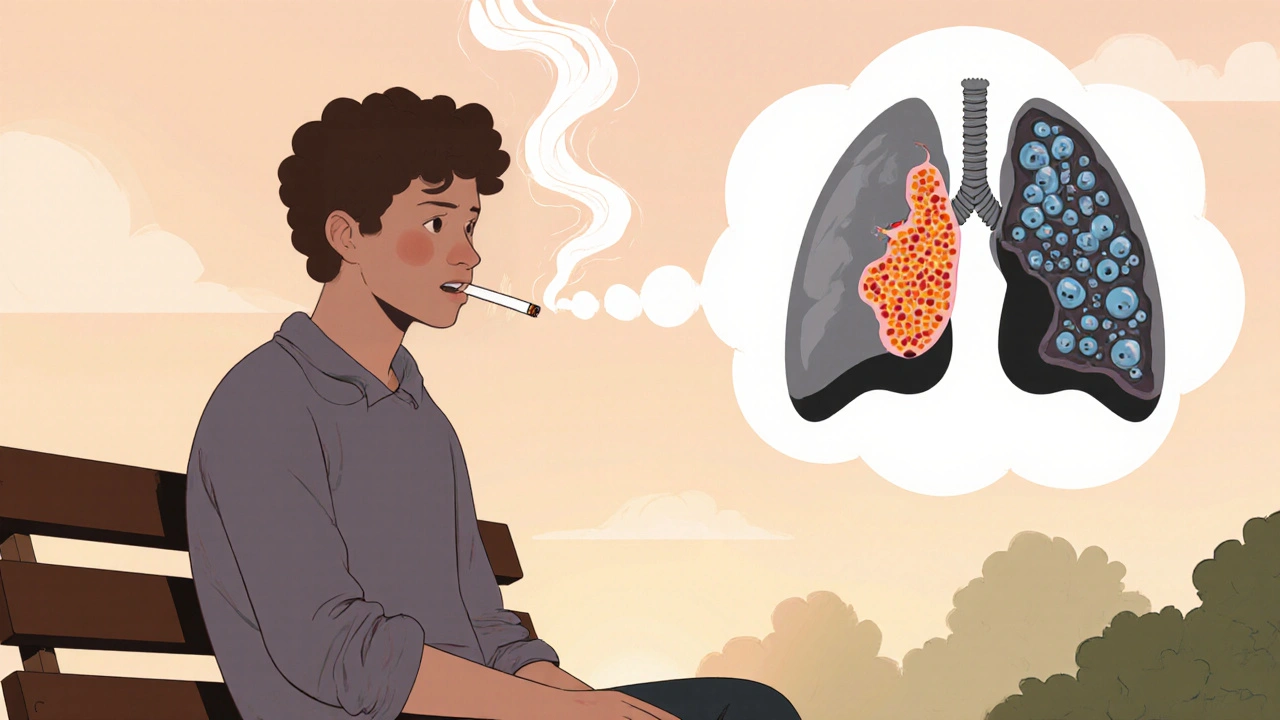
TB-COPD Risk Assessment Tool
Personal Risk Assessment
This tool helps you understand your risk of developing or having both tuberculosis and COPD based on shared risk factors. The article explains how these conditions interact and why understanding your risk is important for early detection and prevention.
Your risk assessment will appear here after calculation.
When two major lung diseases meet, the outcome can be tougher than either one alone. Pulmonary Tuberculosis is a bacterial infection caused by Mycobacterium tuberculosis that mainly attacks the lungs. Chronic Obstructive Pulmonary Disease (COPD) is a progressive airway disorder driven by chronic inflammation, usually linked to smoking. Understanding how these conditions interact helps doctors spot problems early, tailor therapy, and improve patients’ quality of life.
Why the Link Matters
Both diseases share a huge global burden. The World Health Organization estimates over 10 million new tuberculosis (TB) cases and 212 million COPD cases each year. When a person with COPD contracts TB, the infection can spread faster, and TB‑related lung damage can worsen COPD’s airflow limitation. Conversely, COPD’s reduced lung defenses make it easier for TB bacteria to take hold. Ignoring the overlap means missed diagnoses, delayed treatment, and higher mortality.
Shared Risk Factors That Bring Them Together
Several lifestyle and environmental factors push the odds of developing both conditions:
- Smoking - the biggest COPD trigger; it also weakens immune response, raising TB risk.
- Air pollution - fine particulate matter irritates airways and compromises local immunity.
- Occupational dust exposure - miners, construction workers, and agricultural laborers often face both TB exposure and COPD‑causing inhalants.
- Malnutrition - low body‑mass index impairs cellular immunity, a key defense against TB, and worsens COPD symptoms.
- Socio‑economic deprivation - crowded living conditions boost TB transmission, while limited access to healthcare delays COPD diagnosis.
Pathophysiological Overlap
At the tissue level, TB and COPD both stir up chronic inflammation. TB creates granulomas-organized clusters of immune cells-that can scar lung tissue. Those scars resemble the emphysematous changes seen in COPD. Both conditions trigger cytokines such as TNF‑α and IL‑6, which perpetuate airway remodeling and mucus hypersecretion. The result is a vicious cycle: TB‑induced scarring narrows airways, and COPD‑related airflow limitation hampers the clearance of TB bacteria.
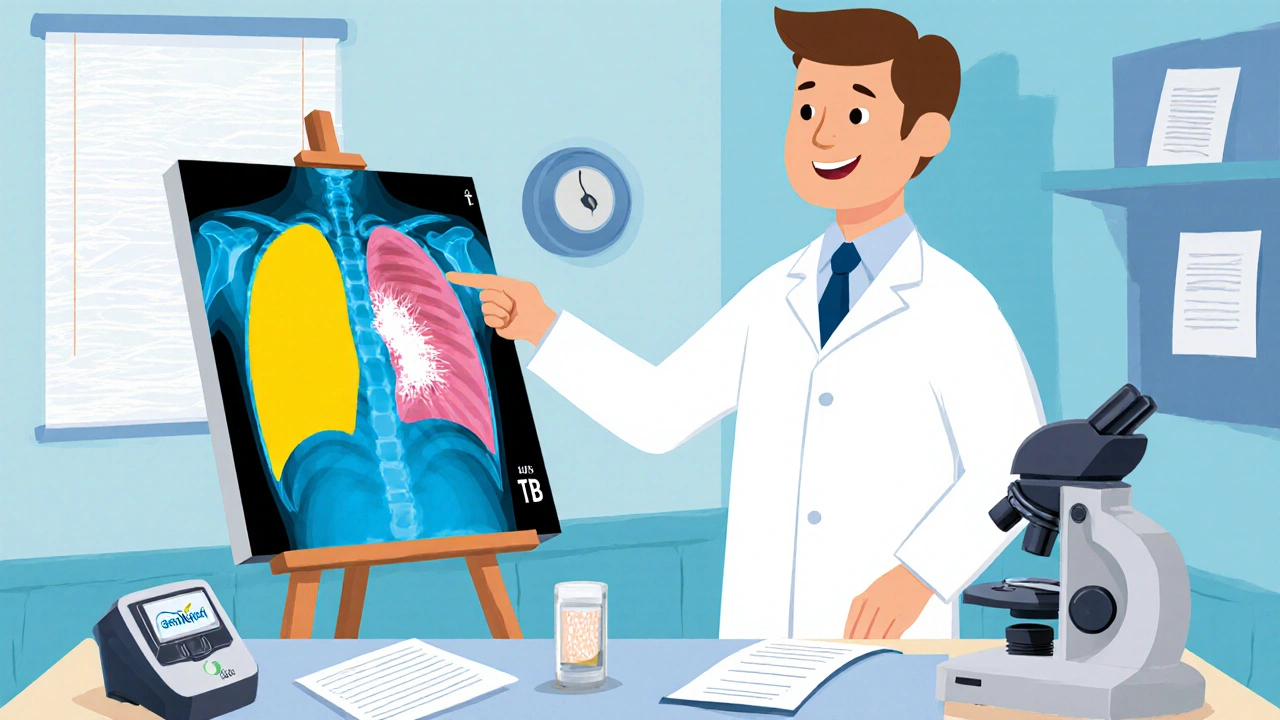
Clinical Clues That One Disease May Mask the Other
Doctors often rely on classic symptoms, but overlap can blur the picture:
| Symptom | Typical in TB | Typical in COPD |
|---|---|---|
| Cough | Persistent, sometimes bloody | Chronic, productive |
| Shortness of breath | Progressive, worsens at night | Exertional, improves with bronchodilators |
| Fever | Low‑grade, intermittent | Rare, unless infection present |
| Weight loss | Common | Possible in advanced COPD |
Because cough and breathlessness dominate both, clinicians need a high index of suspicion, especially in smokers or people with known TB exposure.
Diagnostic Strategies for Co‑existing Disease
When TB and COPD are suspected together, a layered approach works best:
- Chest X‑ray - looks for cavitary lesions (TB) and hyperinflated lungs (COPD). Overlapping findings, like fibrotic patches, can hint at both.
- Spirometry - the gold standard for COPD. A reduced FEV₁/FVC ratio confirms airflow obstruction, even if TB lesions dominate the picture.
- Sputum microscopy and GeneXpert - detect Mycobacterium tuberculosis DNA, essential for confirming active TB.
- CT scanning - provides detailed anatomy, revealing bronchiectasis from TB and emphysema from COPD.
- Blood tests - elevated ESR or CRP support TB inflammation; full blood count may show anemia of chronic disease common to both.
Accurate diagnosis guides therapy and avoids harmful drug interactions.
Treatment Considerations and Potential Pitfalls
Managing both diseases requires juggling standard regimens while watching for side effects:
- Anti‑TB therapy - the standard six‑month regimen (isoniazid, rifampicin, pyrazinamide, ethambutol). Rifampicin can reduce plasma levels of some COPD medications, like theophylline.
- Bronchodilators - short‑acting β₂‑agonists (SABAs) and long‑acting muscarinic antagonists (LAMAs) remain first‑line for COPD. They don’t interfere with TB drugs.
- Inhaled corticosteroids (ICS) - useful for COPD exacerbations but increase the risk of re‑activating latent TB. A careful risk‑benefit analysis is essential.
- Nutritional support - protein‑rich diets help both TB recovery and COPD muscle strength.
- Smoking cessation - the single most effective intervention. Programs combining nicotine replacement, counseling, and bupropion improve outcomes for both conditions.
Regular monitoring of liver function, sputum conversion, and spirometry values helps catch complications early.
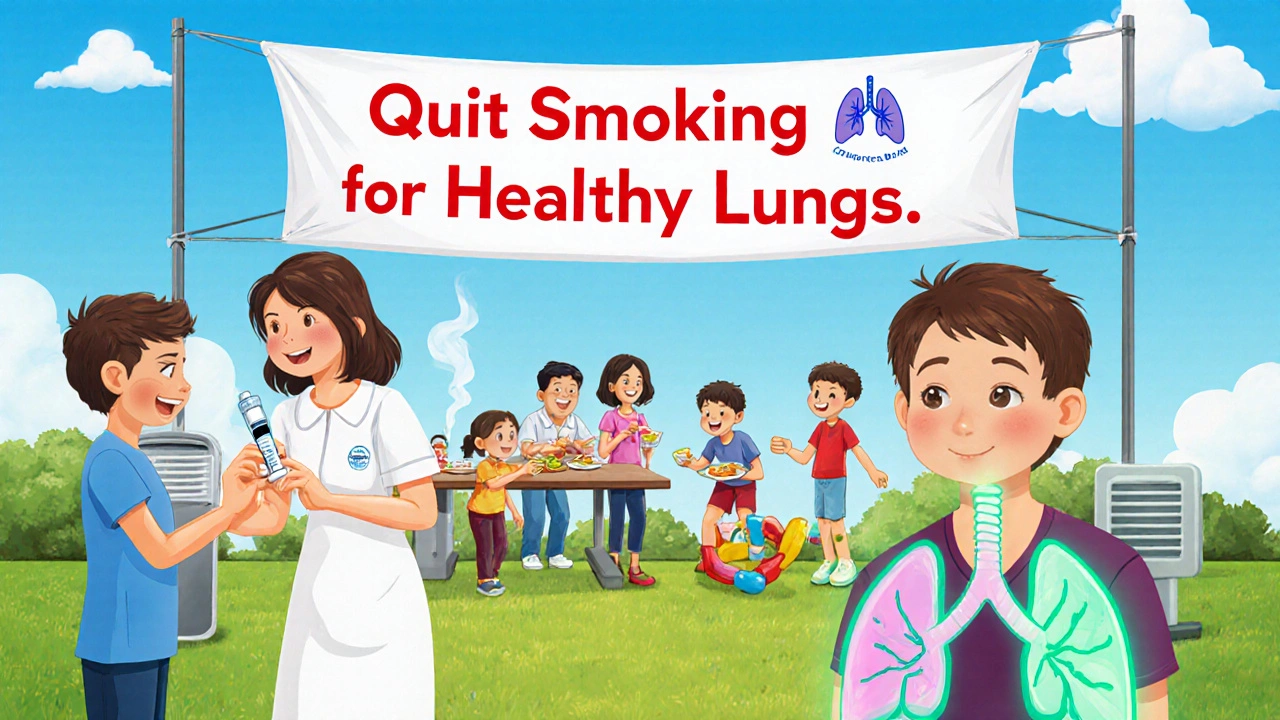
Prevention Strategies That Target Both Diseases
Public health measures can cut the incidence of co‑infection:
- BCG vaccination - still recommended in high‑TB‑burden areas; it may lower severe pulmonary TB, indirectly easing COPD burden.
- Air quality improvement - reducing indoor biomass smoke and outdoor pollutants benefits COPD patients and lowers TB transmission.
- Screening of COPD patients for latent TB - using interferon‑γ release assays (IGRAs) before starting high‑dose steroids.
- Community education - teaching proper cough etiquette, mask use, and early medical consultation.
Current Research and Future Directions
Researchers are exploring how immune dysregulation links TB and COPD. A 2023 cohort study from the UK found that COPD patients who completed a six‑month TB treatment had a 30 % lower rate of subsequent COPD exacerbations, hinting at a protective anti‑inflammatory effect of TB clearance. Ongoing trials are testing host‑directed therapies, like statins, that could dampen the chronic inflammation common to both diseases.
Biomarker discovery is another hot area. Elevated matrix metalloproteinase‑9 (MMP‑9) appears in both TB‑induced tissue destruction and COPD emphysema, offering a potential target for dual‑action drugs.
Key Takeaways for Patients and Clinicians
- The coexistence of pulmonary tuberculosis and COPD is more than a coincidence; shared risk factors and overlapping inflammation bind them together.
- Never dismiss a persistent cough in a smoker as ‘just COPD.’ Consider sputum testing for TB, especially if weight loss or night sweats appear.
- When prescribing inhaled steroids, assess TB history. If latent infection is present, prophylactic treatment may be needed.
- Smoking cessation, proper nutrition, and vaccination remain the backbone of prevention for both diseases.
- Regular follow‑up with chest imaging, spirometry, and TB monitoring ensures that treatment adjustments happen before complications arise.
Can COPD increase the risk of getting tuberculosis?
Yes. COPD damages airway defenses and often involves chronic steroid use, which together make it easier for Mycobacterium tuberculosis to establish an infection.
Do TB medications interfere with COPD treatments?
Rifampicin, a key anti‑TB drug, can lower blood levels of theophylline and some oral bronchodilators. Dose adjustments or alternative COPD meds may be required.
Should a patient with COPD be screened for latent TB before using inhaled steroids?
Screening is recommended in high‑TB‑prevalence regions or in patients with known exposure. An IGRA or tuberculin skin test can guide prophylactic treatment decisions.
How does smoking cessation impact both TB and COPD outcomes?
Quitting smoking improves mucociliary clearance, reduces inflammation, and restores immune function, lowering the chance of TB infection and slowing COPD progression.
Is the BCG vaccine useful for adults at risk of COPD?
BCG mainly protects children against severe TB forms. In adults, especially those with COPD, it offers limited direct benefit, but preventing TB overall still helps reduce lung damage.
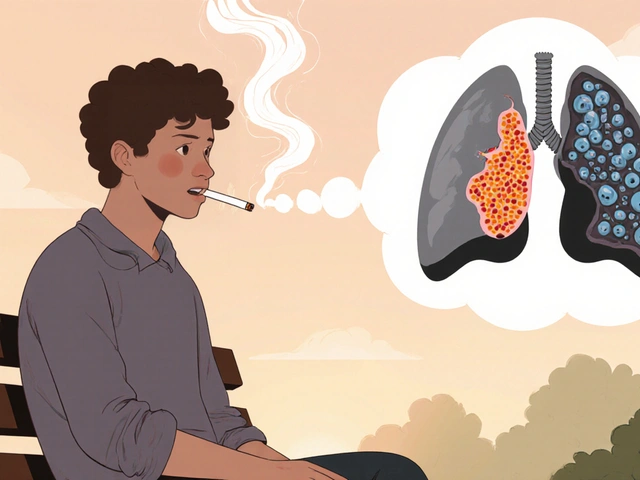
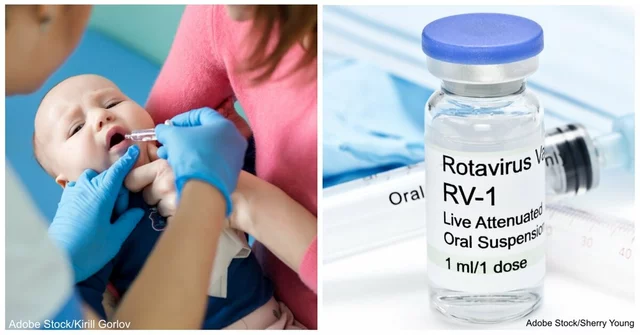
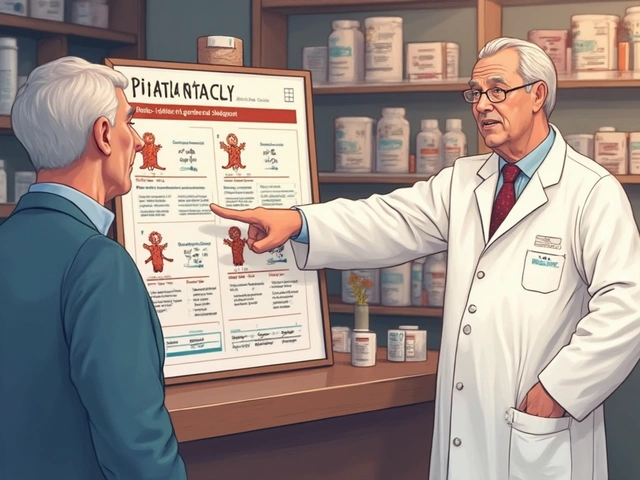





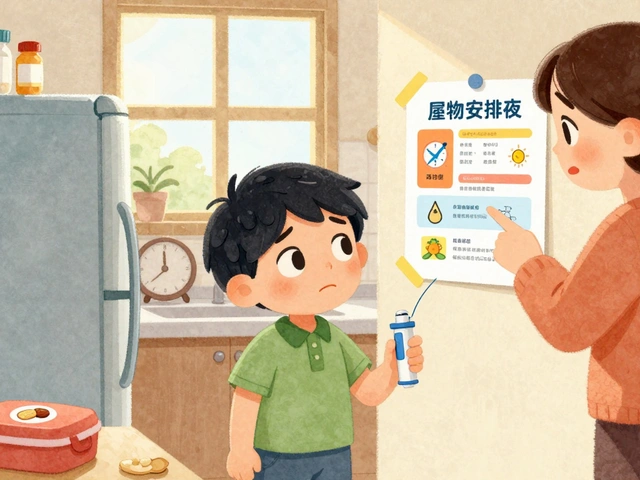
eric smith
October 21, 2025 AT 02:04Oh great, another article tying TB and COPD together like it’s a Netflix crossover. I mean, who wouldn’t enjoy a double whammy of chronic cough and lung scarring, right? The shared risk factors are basically a checklist for a perfect storm of misery. And let’s not forget how smoking magically turns your lungs into a playground for bacteria. Congrats on rediscovering the obvious.
Devendra Tripathi
November 1, 2025 AT 15:26Sure, the piece paints a rosy picture, but it completely sidesteps the socioeconomic shackles that keep people trapped in this vicious loop. You can’t just “quit smoking” when you’re living in a crowded slum with no clean air. The article’s clinical focus feels like a privilege‑tour for the well‑off. I’d love to see a deeper dive into how policy failures fuel this co‑infection crisis.
Nick M
November 13, 2025 AT 05:13Honestly, the whole TB‑COPD link is probably a cover‑up by the pharma cartel to push combo‑drugs. They want us to think it’s just inflammation, but it’s really a secret agenda to lock us into lifelong prescriptions. The cytokine spiel is just jargon to make us forget the real power dynamics at play. Wake up, folks.
Ericka Suarez
November 24, 2025 AT 19:00Well, excuse me while I grab my patriotic cape and shout that America’s lungs are under siege! If you think TB and COPD are just a coincidence, you’re ignoring the real enemy-foreign pollutants and weak immigration policies. The article could’ve used a dash of real‑worn American grit instead of that bland med‑speak. Also, sorry for the typo, but those lungs are *so* inflamed it’s hard to type correctly.